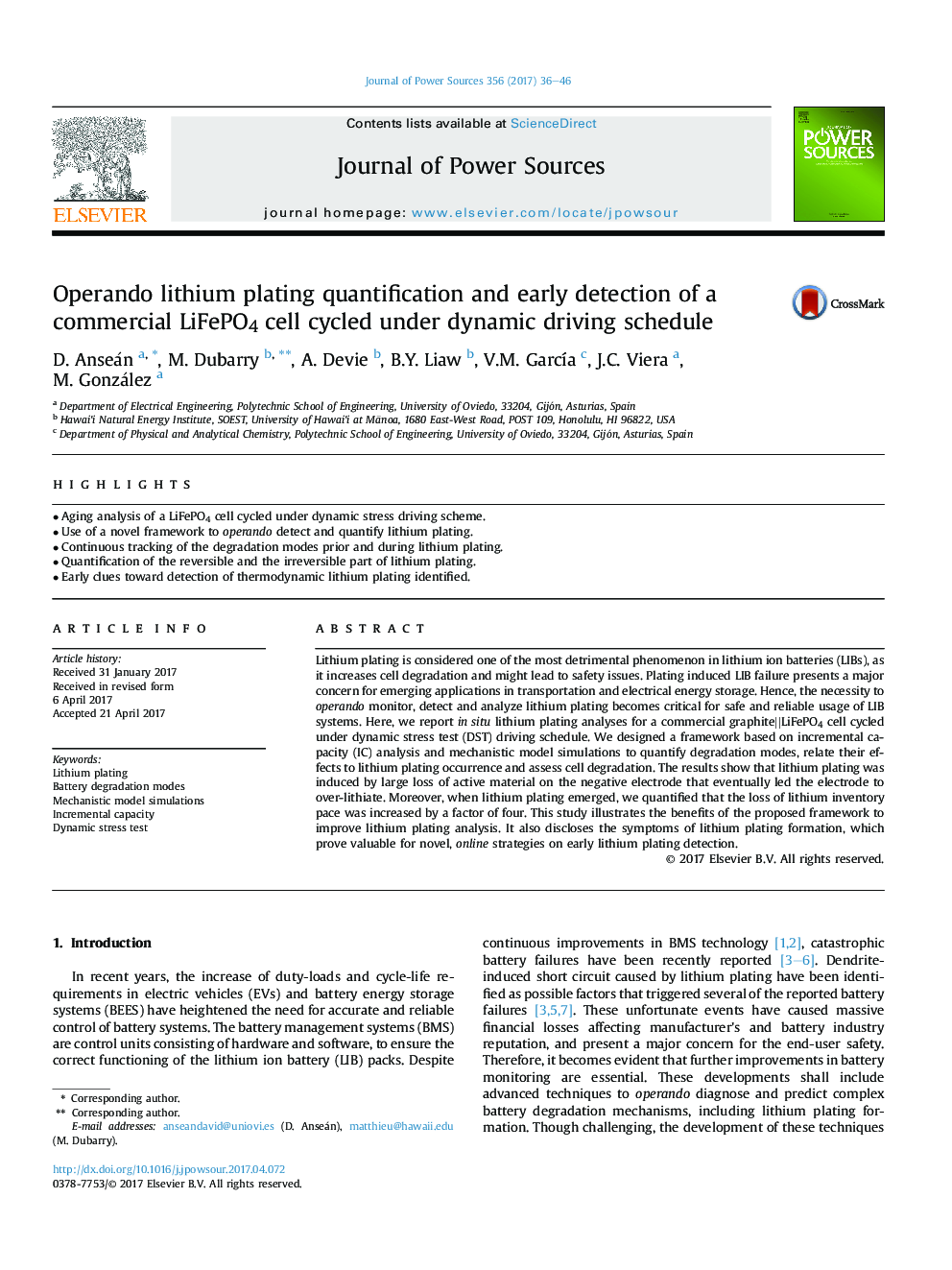| Article ID | Journal | Published Year | Pages | File Type |
|---|---|---|---|---|
| 5149304 | Journal of Power Sources | 2017 | 11 Pages |
Abstract
Lithium plating is considered one of the most detrimental phenomenon in lithium ion batteries (LIBs), as it increases cell degradation and might lead to safety issues. Plating induced LIB failure presents a major concern for emerging applications in transportation and electrical energy storage. Hence, the necessity to operando monitor, detect and analyze lithium plating becomes critical for safe and reliable usage of LIB systems. Here, we report in situ lithium plating analyses for a commercial graphite||LiFePO4 cell cycled under dynamic stress test (DST) driving schedule. We designed a framework based on incremental capacity (IC) analysis and mechanistic model simulations to quantify degradation modes, relate their effects to lithium plating occurrence and assess cell degradation. The results show that lithium plating was induced by large loss of active material on the negative electrode that eventually led the electrode to over-lithiate. Moreover, when lithium plating emerged, we quantified that the loss of lithium inventory pace was increased by a factor of four. This study illustrates the benefits of the proposed framework to improve lithium plating analysis. It also discloses the symptoms of lithium plating formation, which prove valuable for novel, online strategies on early lithium plating detection.
Keywords
Related Topics
Physical Sciences and Engineering
Chemistry
Electrochemistry
Authors
D. Anseán, M. Dubarry, A. Devie, B.Y. Liaw, V.M. GarcÃa, J.C. Viera, M. González,
